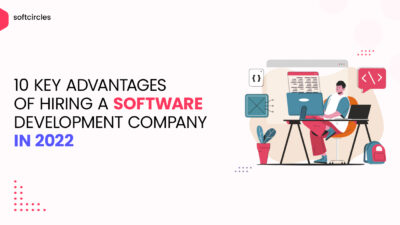You can indeed write SEO-Friendly Blogs while using paraphrasing. In the current digital age, where online visibility is vital for success, content creation has become essential for SEO (Search Engine Optimization) and website content ranking. Blogs that are optimized for search engines play a crucial role in improving search engine rankings and attracting organic traffic.
Paraphrasing is a crucial strategy in creating search engine-friendly content. SEO content writing is the act of writing in a way that search engines can understand what your content is about. Writing for SEO, or Editorial SEO, helps you appear in Google to get organic clicks to your website and blog posts. Besides the pogo-sticking thing, there are apparent ranking factors.
Some that Google’s robots use to rank pieces of content accordingly. Consistent business blogging has been integral to all those keen on content SEO audit and other creative content writing strategies for many years. No matter your niche or industry, if you are trying to reach the top of the SERPs, relevant blog posts containing target keywords are how to get there.
Mind you, Editorial SEO is when a company leverages CGC (Company-Generated Content) to create content to attract visitors and potential customers through Google searches. This article will provide the steps to help you create original, simple, optimized blogs for Search Engine Optimization (SEO) top rank and discuss the importance of paraphrasing.
Why Paraphrasing Is Important In Strategic Website Content Auditing
In layman’s language, Paraphrasing means putting someone else’s ideas into your own words while keeping the meaning intact. Why does it matter? First, it helps you avoid plagiarism. It shows that you understand the material and can explain it uniquely. Secondly, paraphrasing makes things easier to understand. It allows you to simplify complex content information.
At the same time, it makes it more precise and relatable. By putting ideas into your own words, you can make them more convenient for yourself and others. Thirdly, paraphrasing is crucial because it shows you understand the source well enough to write it in your own words. It also gives you a powerful alternative to direct quotes, which should be used infrequently.
On the one hand, it is a valuable way to use source material for your essay—providing it is appropriately referenced. Copying and pasting a source, adding a reference, and PRESTO is unacceptable in academic papers! On the other hand, it also applies when you must use various direct quotes (referenced), indirect quotes or paraphrases (referenced), and your comments.
Equally important, it is essential because it shows you and your reader (i.e., your lecturer) that you have understood the source sufficiently enough to write it in your own words. Still, it also gives you a powerful alternative to using direct quotes (which might include some less relevant material). With that in mind, let’s learn how to Paraphrase your content correctly.
How to paraphrase your content:
- Please read the text you want to paraphrase carefully before you attempt to rephrase the content.
- Look up in your dictionary any words you do not understand.
- Re-read the text quickly - skim it if you feel confident.
- In particular, pay attention to the first sentences in paragraphs (often the topic sentences) and keywords.
- Cover the text and verbally summarise it from memory only.
- Using complex academic language is unnecessary—use your own words.
- Write down your verbal summary.
- Recheck the original text to make sure you have included the main points.
- Add quote marks if you have used focus phrases or unique terms that cannot be paraphrased.
- Record all source and author details for future reference.
There are still more helpful content auditing strategies to help develop your paraphrasing skills. However, the essential feature is ensuring you thoroughly understand the specific source content text before paraphrasing it.
Lastly, we can mention that paraphrasing is helpful for SEO and ranking. You can use your words to express ideas to optimize your writing for search engines. This means integrating relevant keywords and increasing the chances of being found online. In a nutshell, Paraphrasing is a valuable skill that helps you become a better writer, thinker, and communicator.
What To Know As You Write SEO-Friendly Blogs For Your Main Website
Writing optimized blog posts for users and search engines is a skill. It can be both time-consuming and challenging. You must be smart about choosing and writing content for your blog topics to keep your reader engaged. It is not the same as writing an article; as such, you need to pay attention to the small details and implement a set of SEO rules.
A well-optimized blog post with excellent quality content has more chances of ranking higher in search, while a well-optimized blog post with not-so-great content has limited chances of achieving high rankings. We are trying to say that if you want to improve your rankings, you must improve your writing skills. Before putting pen to paper or fingers to keyboard, take time.
Think about what to write in your blog post and jot down your thoughts. This will save you time later in the process. In most cases, we recommend beginners in content writing and auditing try reading several articles related to SEO and Digital Marketing daily. When you find an interesting title or topic, copy the URL and title and save it to your notes.
Review your notes at the beginning of each month and decide which topics to cover. Set a publishing date for each blog topic in your content calendar. When writing the blog post, do a detailed analysis and answer a few questions.
Consider the following:
- What specific topics to cover in the blog post?
- What is the blog post’s goal (to get better rankings for a keyword, get more subscribers, promote my SEO Courses, etc.)
- How will the new blog post benefit your readers?
Once you have answered these questions, moving on to the next steps will be easier. In less fancy terms, editorial SEO helps us to create blog posts and landing pages that rank for different search queries in Google and drive organic growth to your brand. Of all the types of SEO, this one is the most common and, generally, the one that can have the most visitors to your website.
In general, three main types of SEO can help you drive more awareness to your website. These types are Editorial, Programmatic, and Technical SEO. Let’s dive deeper into each one to learn more about what each entails.
Programmatic SEO
Programmatic SEO is when a website leverages UGC (user-generated content) or a product-led SEO strategy to exponentially grow website traffic without the manual work of having to create every piece of content (like you do with blog posts). When you think about it, programmatic SEO sounds like the ideal situation. However, this type of SEO is tough to get right.
Mainly because it depends heavily on how your product is built; for example, consider Yelp—an excellent example of a website that does a great job with programmatic SEO. Local businesses create listings on the website, which are then turned into individual landing pages that rank in Google. So it doesn’t necessarily need to invest in content production to keep growing.
As long as they have new businesses using their platform and have users that review those businesses, Yelp’s organic traffic will continue to grow (unless there’s a massive Google update that wipes them out, which is not likely). In this case, however, Yelp has to pay much attention to how UGC is created on its platform. Engineers need to ensure a few things in their strategy.
For example, ensure that automatically generated landing pages follow SEO best practices and that Yelp continues optimizing its technical SEO. While this form of SEO is ideal, it doesn’t make sense for most businesses. Thinking about programmatic SEO after creating your product or site is challenging.
Technical SEO
Technical SEO involves optimizing the technical aspects of your website to ensure that it is easily crawlable by Google’s search engine. Examples include optimizing page load times, crawlability, following on-page SEO best practices, and the structure of page URLs. This doesn’t always make or break your SEO strategy, but it’s crucial to get it right.
In particular, whether you decide to leverage editorial or programmatic SEO. If you’re using a modern website platform and CMS like Webflow, WordPress, or Ghost, then this part shouldn’t be something you need to worry too much about. Just know that your website needs to load quickly, be responsive on both desktop and mobile and have a great reading experience.
It should also have a sitemap you can submit in Google Search Console, and no pages you want to rank in Google have noindex tags. Generally, an SEO team creates a strategy before a website (or part of a website) is even built. You almost have to design your product and website in a way that can leverage technical SEO tactics, which is why it’s so hard, yet so valuable, to try.
Editorial SEO
This type of SEO involves creating optimized content for Google that is valuable to your readers. Examples include blog posts, landing pages, FAQs, and other web pages. You’re reading an example of editorial SEO based on how to write SEO-friendly blogs—creating content to educate the target audience while ranking in Google to drive search traffic to my website.
Some of the most successful websites leveraging editorial SEO are HubSpot, Zapier, Monday.com, and many more. To learn more about how to approach editorial SEO, you can check out a few guides on this blog with more helpful information. The first one you should consider reading is how to write SEO blog posts in detail—the article goes over how to do keyword research.
It also digs deeper into how you should think about creating blog content online to reach an audience through organic search. We also have another article about creating content outlines that will help you write blog posts like this one more quickly and easily. Compared to other traditional marketing techniques and ad channels, the great thing about SEO is its effectiveness.
Unlike Paid Ad Search Campaigns or Social Media Marketing and Digital Advertising, a quality SEO auditing strategy doesn’t require an ongoing budget. It only requires an initial investment in content creation and a few steps.
The Effective Steps To Write SEO-Friendly Blogs While Paraphrasing
In layman’s language, Paraphrasing is a way of using different words and phrasing to present the same ideas. Often, Paraphrasing is used with short text sections, such as phrases and sentences. A paraphrase or a summary quote offers an alternative to using direct quotations. Thus, it allows you to integrate evidence/source material into academic writing.
When it comes to academic integrity, accurately paraphrasing and citing sources help students avoid plagiarism. Instead of copying text from a particular source, Paraphrasing allows students to ethically share and incorporate ideas from other sources into their writing. In simple terms, Paraphrasing is an essential writing tool: it strengthens writing with evidence.
Editorial SEO falls on the content side of the spectrum, whereas other forms of SEO are more technical. Technical SEO involves optimizing your website to make it faster, more straightforward to navigate, and more user-friendly. This can include optimizing your title tags, having a clean internal linking structure, and ensuring that your web pages follow the best guidelines.
Such as the Technical SEO Best Practices as you Write SEO-Friendly Blogs for your website. Editorial SEO, on the other hand, is all about creating content that resonates with your target audience and that Google can recognize as valuable and authoritative. This means creating highly engaging content that offers actual value to your readers and following these steps.
Step #1: Create the structure for your blog posts
In the first place, Paraphrasing is an active listening skill that can significantly enhance communication and understanding between individuals. It allows the listener to demonstrate their interest and respect for the speaker while verifying their comprehension of the message. But you can’t start thinking about paraphrasing content without the actual structure.
On that note, it’s clever to start your blog post by creating a clear structure—splitting a blog post into various sections can make writing easier. Crafting a good and attractive title is essential for SEO and user-friendliness. Some bloggers prefer to begin with this step and then create the blog structure; others prefer to come up with the title once they have a concept.
Especially a blog concept of what the blog post will cover—we usually recommend following what is more efficient for your blog post topics and article titles. Your blog posts (given the topic titles) should be intriguing enough to make users click when displayed on the search engine results pages. Whatever you prefer, a good article should have crucial characteristics to note.
Every blog post should have the following crucial elements:
- An introduction (to the topic at hand) followed by a description of the main topic title.
- Titles with a character limit between 55 and 60 are easily shown without breaks in the SERPS.
- The topic title should contain your target keyword (but without keyword stuffing to trick crawlers).
- Your topic title should accurately describe the content that will live within the blog post.
- A body (with the main message), proper headings (H3, H4, H5…), at least four paragraphs under each title, etc.
- Only consider quality backlinks (helpful and resourceful external and internal links) to the readers.
- Utilize some images (with the proper description and alt text) and videos (embed YouTube content).
- Add a summary or a conclusion (a takeaway thought of the essential ideas), plus a few other related topic links.
Additionally, you might add information to clarify to the essential search engines and target web users what to expect in the content. For example, instead of just creating a title with your keyword (like writing SEO-friendly blogs), you might add ‘how to’ or ‘a step-by-step guide’ to make the title more attractive and clickable. It’s also suitable for search engines.
In short, write down what you want to say in the article workflow (divide your plan into sections), and you will have a summary of your blog post. This will make the process faster and more efficient. Instead of writing more significant content segments and sections, you can write 200 words to cover a specific part of the blog post.
Step #2: Understand the purpose of paraphrasing
Paraphrasing is essential in SEO to enhance website content and optimize search engine rankings. Its purpose lies in providing unique and original content that avoids plagiarism while maintaining relevance. In addition, paraphrasing lets website owners present information freshly and engagingly, attracting readers and search engine algorithms.
By paraphrasing, SEO professionals can effectively target specific keywords and improve a website’s visibility and credibility. In essence, paraphrasing in SEO enables websites to stand out amidst the vast online competition and drive organic traffic to their pages. Equally, Paraphrasing can help you prevent the overuse of direct quotations, and it can be more concise than quoting.
Paraphrasing can help you think about and understand the text you are paraphrasing. Remember, rephrasing another person’s idea forces you to think about what that person is saying. You can also look at Google as a database of content. Content in the database eventually takes a while for it to surface to its viewers. This is why you hear people say, “SEO takes time.”
It can take 3-6 months to start seeing your content rank. Therefore, it is crucial to summarize and paraphrase correctly to effectively integrate your research into your essay without relying on direct quotations or committing plagiarism. Through paraphrasing, you will demonstrate your understanding of the texts you read by writing them in your own words.
Step #3: Conduct keyword research for blog topics
By all means, it’s worth mentioning that quality keyword research is essential when you write SEO-friendly blogs and website post articles optimized for search engines like Google. Most search engines like Google and Bing aim to organize all the information in the world. Every day, hundreds of thousands of blog posts are published on the web that various users search.
A search engine like Google needs to figure out what these blog posts are about and rank them accordingly to give the best search experience to its users. If blog posts rank instantly, Google’s search results would be too volatile. And this volatility would not make a good search experience. So SERPs purposely puts content “on hold” in their database until it is clear.
This also makes search engines confident they can provide their searchers a good experience. For your information, this holding period is often called the “sandbox effect” by most professional SEOs and experienced webmasters. There’s no explicit mention of this sandbox from Google, but it can be seen with new websites. Luckily, you can optimize your blog so quickly.
In particular, to meet your target audience’s questions by first understanding their search keywords. Google’s Keyword Planner, SEMrush, and Ahrefs are just a few examples of tools and strategies that can help conduct keyword research in your plan. With the help of these tools, you’ll be able to determine which keywords are associated with your blog’s subject.
Step #4: Utilize a Reliable Paraphrasing Tool Effectively
Choosing a reliable paraphrase tool for paraphrasing is vital if one wishes to achieve accurate and valuable results. You can save time and effort with the help of a helpful paraphrasing tool, all while maintaining the core meaning of the source material. Remember to review and edit the output of your paraphraser to ensure that it is consistent and easy to read.
Because paraphrasing tools can change the sentence structure or produce awkward phrasing, it is crucial to refine the content that has been paraphrased so that it is consistent with the flow of your blog. To receive a lot of traffic, once you have the keywords, you can use paraphrasing techniques using a paraphrasing tool to integrate them naturally into your content.
In other words, using a reputable paraphrase tool, you can quickly generate content optimized for search engines. On that note, Paraphrasetool and Quillbot are the best paraphrasing tools for creating engaging and quality content. But you can’t just design a new business website, create SEO-optimized content around the website, and expect it to rank quickly.
This is why you need to create content consistently, for months, until you are no longer in this sandbox and your articles start getting crawled and indexed quickly. Again, this goes back to the whole volatility thing. Meaning that it’s about using the right tools, getting the search intent right, and making sure your content gives a searcher precisely what they want.
Step #5: Keep your headings short and paragraphs simple
To enumerate, the title headings within your blog post will structure the whole page, so use them but correctly. They are essential not only for readability but also for SEO purposes. They help Google grasp the blog post’s main topics and can help your ranking. Subheadings allow people to find their way through your blog post by clarifying the structure of your blog post.
Originality is the key—paraphrases should use your freshly-created vocabulary, phrasing, and sentence structure, not your source’s sentence structure, phrasing, and words. By paraphrasing the work and arguments of others effectively, you can: save space and keep your study more focused—distill complex information into language that general readers can understand.
Make sure you use your keywords in some of the subheadings, but not in every single of them, as it will make the text unnatural. Everybody uses paragraphs, but not everybody uses them well. Don’t start each new sentence on a new line, and don’t use large blog paragraphs on a page and hit the publish button. There is a good possibility that your target users will run.
This is because most of your potential readers are on a mobile device. Therefore, connecting sentences and splitting your content into simple paragraphs will make it easy for them to read the content. Out of experience, we usually recommend using small paragraphs (2-3 sentences) and various formatting options, i.e., bold and italic, to make the text less boring.
Step #6: Optimize Content Structure and Formatting
Blogs that are well structured and formatted improve readability and contribute to optimizing search engine results. You should divide your blog’s content into logical sections and give them descriptive headings and subheadings. It would be best to naturally integrate paraphrased keyword phrases into your titles and content to provide search engines with enough context.
As well as to help improve your blog’s visibility. Make your content simple to study using bullet points, numbered lists, and short paragraphs. This will benefit both your readers and search engine rankings. Remember that a well-organized blog containing keywords that have been paraphrased can significantly boost your search engine optimization efforts.
Add inbound links when writing a new blog post, but only when it makes sense. It is appropriate to use if you have an already published blog post you can associate with your latest blog post. Remember, internal linking can be very effective and is an easy-to-follow SEO technique with numerous benefits. It can help search engines discover new pages on your website.
Equally important, it gives search engines a big hint about what a page is about. The strategy is also a great way to allow users to click a link and read more about a topic. Still, it’s one of the techniques you can use to reduce the bounce rate and keep users on your website for an extended time. Avoid plagiarism (including self-plagiarism) and provide your authorial voice.
Step #7: Work on the length of your blog posts content
For beginner content writers, the description tag summarizes the blog post in under 200 characters. Therefore, you need to optimize your meta description length because Google may choose to show your description in the results. The meta description should be informative and captivating to encourage users to click your preferred website link and visit your blog.
Make sure your blog post has a minimum of 300 words. Studies have shown that longer blog posts perform better in searches. However, it does not mean that shorter blog posts will not rank well. Remember that if your article is too long and not easy to read, it might scare users away. What is more important is the quality of the content and not the quantity.
Only attempt to write a long blog post when you know you are a skilled writer. Promoting an in-depth blog post that covers both sides of a story, with lovely images, references to studies, and provides valuable and helpful information is much more likely to get links than a short and not-so-interesting post. Make your blogs useful to readers and likable by search engines.
On that note, the best way to find out how long it takes to make your blog post is to open Google, search for your target keywords, and examine the results. Always aim to publish a better piece than those previously published blog posts. Do not expect to get results immediately. It takes time to rank in Google and other search engines like Bing, Yahoo, and Yandex.
Step #8: Proofread, Edit, and Optimize for SEO
Editing and proofreading are essential steps in the process of making a blog search engine optimized. You should carefully review your content to confirm no grammatical mistakes, misspelled words, or inconsistencies. Make sure that the content you have paraphrased with the help of a paraphrasing tool flows naturally and smoothly with the rest of the website content text.
Also, ensure that you check your content thoroughly. In addition, you should optimize your blog by including relevant meta tags, meta descriptions, and alternative tags for any images you post. Your chances of ranking higher in search results will improve because these optimizations provide search engines with additional context. Try to focus on ending the search journey.
Ending the search journey is Google’s subjective way to know if a blog post is either a good one for its users or a bad one. Great content is emotional, so Google has to develop user signals to know what’s “good.” Still, your posts should be so informative that the user either clicks on outbound links, spends a lot of time on them, or browse the source website for more.
Otherwise, if a user opens the first article and then clicks back and clicks on another piece, Google gets a signal that the first article did not give them what they were looking for — sending a negative signal to the first-ranking article. In return, this makes Google question if it should prioritize a different blog article to be in the first spot rather than your blog post.
What Business Blogging Future Looks Like In The Content Marketplace
Everyone is glued to their phones on Tik Tok and YouTube these days—it may seem that nobody reads blogs anymore. After all, why read a blog post when you can watch a quick video? The main reason blogs aren’t obsolete is the continued prevalence of Google search & other search engines. Per user queries, search engines are still the #1 way to find information online.
And what’s more, is that most search queries lead to blog posts. There are roughly 5.6 billion searches on Google daily, with 94% of web searches landing on organic search results. So, What comprises a majority of the organic search results? You guessed it, blog posts. Some blogs answer frequently asked questions, review products, teach new skills, and more.
While blogging is still alive & kicking right now, will it continue to stay that way down the line? After all, it would be a shame to dump a ton of time and resources into creating an in-depth blog, only for it to become obsolete in a few short months or years. The good news is there’s no sign that business blogging or content posting effectiveness will go away anytime soon.
From our point of view, as long as people continue to use search engines to find information online, blogging will still be a viable and profitable practice, especially for creative content SEO strategies. Yet, that doesn’t mean that the same search engine optimization techniques and the categories or types of blog posts will always work. Stick to what works best for you!
In Conclusion;
It’s worth mentioning that before you publish your blog post, it is crucial to let someone else read it first. Ask them whether they understand the central concept of the blog post, and invite them to correct any typos and grammatical errors. But mastering the art of creating SEO-friendly blogs requires a comprehensive plan, and paraphrasing is essential in achieving success.
Fortunately, coupled with high-quality content writing skills, you can create compelling posts and engaging blogs that are reader-friendly and search engine optimized. In particular, this can only be possible by first understanding the purpose of paraphrasing, conducting keyword research, utilizing reliable paraphrasing tools, optimizing your blog content structure, etc.
As well as formatting and proofreading for SEO. Remember that SEO-friendly blogs attract organic traffic and establish your brand as a trusted source in your field. Embrace the power of paraphrasing using a paraphrasing tool to unlock the true potential of your content for improved SEO results—most websites with tons of organic traffic live on editorial SEO plans.
This is because this type of SEO is often used to build strong brand awareness, attract potential customers, and used to establish credibility and trust with your audience. Editorial SEO also allows you to showcase your expertise in the industry. Content optimization can also be leveraged to appear in Google’s featured snippets, leading to more click-through rates.
Read Other More Related Resource Reference Topics:
- Keyword Cannibalization | Top 5 Steps To Identify & Solve It
- A Strategic Keywords Search Plan + Tools To Beat Competitors
- How Search Engine ‘People Also Ask’ Feature Helps In Ranking
- The Importance Of On-Page SEO Optimization For High Rankings
- Voice SEO | Top 10 Best Search Engine Optimization Practices
Following the content outline guide in this post, you should have a good chance of ranking in featured snippets. Lastly, SEO can be a highly cost-effective way of driving traffic if done correctly. It’s time intensive, sure. But if you don’t have the engineering resources to build a programmatic SEO strategy that makes sense, your next best bet is investing heavily in content production.
Answers To Frequently Asked Questions:
1. Why is paraphrasing important to critical thinking?
Explaining something in your own words demonstrates your grasp of the content far better than a quotation. You want to make your voice the most prominent one in your assignment, even when discussing someone else’s ideas. Generally speaking, Paraphrasing lets you emphasize the ideas in source materials that are most relevant to your research project instead of the exact language the author used. In addition, Paraphrasing also lets you simplify complex material, sometimes rewording to use language that is more understandable to your reader.
2. What are the benefits of paraphrasing in communication?
There are several types of paraphrasing, including Direct Paraphrasing. Indirect Paraphrasing. Summary Paraphrasing. In most cases, Paraphrasing helps people feel that their ideas are valid and respected because no judgment is involved. Similarly, Paraphrasing allows speakers to hear how others are interpreting their ideas. Paraphrasing gives speakers a chance to clarify or confirm to avoid misunderstanding.
3. What does SEO friendly mean in content creation?
SEO-friendly content is the type of content that’s created in a way that helps the search engines rank it high. Although some marketers think this means it should be stuffed with keywords, it’s intended to help, search engines find, understand, and connect your content to the topic, you’re trying to cover. You will not have trouble having your target keywords (and variations) in your blog posts; we recommend it. However, we do not recommend keyword stuffing.
4. Are website blogs and posts still good for SEO?
First, it’s essential to realize that blogs remain an excellent tool for link-building opportunities. Another primary reason blogs are integral for SEO is the fantastic opportunities they provide to include internal links & external links. Well-written, informative blog posts also attract backlinks from other content creators online, which is a huge plus. In other words, do not add keywords in the text for the sake of doing so or for ranking purposes. Instead, do it only when it is natural to read.
5. What is the benefit of paraphrasing and summarizing over quotations?
Choose to paraphrase or summarize rather than quote directly when the meaning is more important than the particular language the author used, and you don’t need to use the author’s preeminent authority to bolster your argument. Decide what the critical information is for in your discussion. Change the order of the ideas and the words. This can help you to emphasize your interpretation of the original text. Likewise, change the word form/grammatical form if necessary.









